(To Quoc) - On the morning of December 20, the Ministry of Culture, Sports and Tourism held an online workshop to provide comments on the Draft Strategy for the Development of Vietnam's Cultural Industries to 2030, with a vision to 2045. The workshop was connected online to the Departments of Culture, Sports and Tourism and localities across the country. Deputy Minister Ho An Phong chaired the workshop at the Hanoi bridge.
Time to promote cultural industries to new heights
Speaking at the opening of the workshop, Deputy Minister Ho An Phong said that the development of Vietnam's cultural industries (CNVH) has been mentioned in many Party documents. On September 8, 2016, the Prime Minister issued Decision No. 1755/QD-TTg approving the "Strategy for the development of Vietnam's cultural industries to 2020, with a vision to 2030". The promulgation of this Strategy has created positive changes and innovations for the cultural industries.
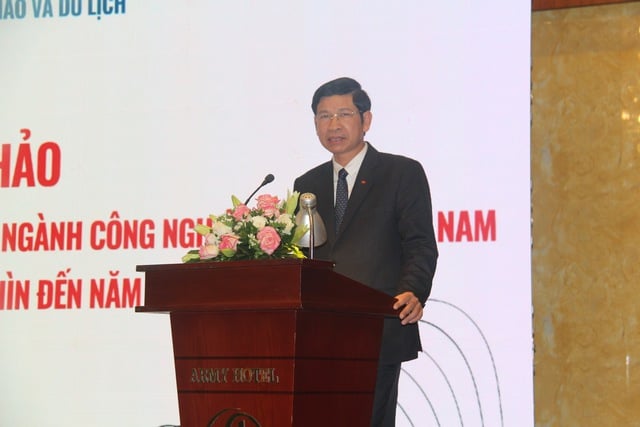
Deputy Minister Ho An Phong speaks at the Workshop
According to Deputy Minister Ho An Phong, after 8 years of implementing the Strategy, the cultural industry has created positive changes, contributing more than 4% of GDP. However, in the new context, we must seize the opportunity for the country to enter the era of growth as directed by General Secretary To Lam, requiring Vietnamese cultural industries to reach a higher level, affirming the awareness and position of cultural industries and at the same time promoting cultural industries to new heights.
"From that awareness, the Ministry of Culture, Sports and Tourism has submitted to the Prime Minister Directive 30 on the development of Vietnam's cultural industries. At the same time, the Prime Minister assigned the Ministry of Culture, Sports and Tourism to coordinate with relevant ministries and branches to submit to the Prime Minister for approval the Strategy for the development of Vietnam's cultural industries to 2030, with a vision to 2045, and to complete it this year. Although the time is urgent, the Strategy must create a change for the cultural industry, based on the development of awareness, meeting requirements at new heights, demonstrating efforts to reach out into the new era" - Deputy Minister Ho An Phong clearly stated.
According to the Deputy Minister, the Draft Strategy includes 2 articles, 5 viewpoints, 7 general goals, 10 specific goals, 6 development orientations, 5 key IT sectors associated with development solutions and implementation organization in each stage.
The Deputy Minister asked the delegates to give their in-depth opinions so that the Strategy, when issued, must raise social awareness, demonstrate a new vision of the cultural industry, and enhance the position of Vietnam's cultural industries in socio-economic life. In addition, mechanisms and policies must be created to mobilize maximum resources for the development of the cultural industry. We need guiding and constructive policies to create new motivations for social enterprises to do cultural industry.
Mr. Tran Hoang, Director of the Copyright Office, said that the Strategy sets a target that by 2030, the cultural industries will contribute 7% of GDP; by 2045, Vietnam's cultural industries will strive to contribute 9% of GDP in revenue, attract 6 million workers, become a developed country in cultural industries in the Asian region and affirm Vietnam's position on the world cultural industry map.
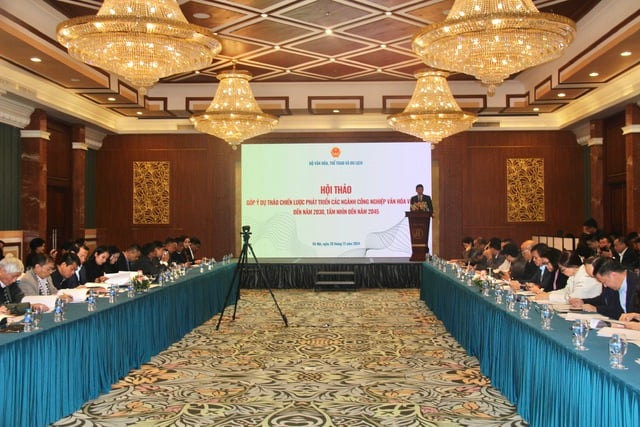
Conference Scene
Vietnam's cultural industries develop in several directions: Professionalism, modernity, application of science and technology, innovation and digital transformation; associated with international integration, maximizing the advantages of regions.
Contribute to enhancing national soft power, building and affirming the brand for high-quality cultural industrial products bearing Vietnamese cultural identity.
Form large enterprises, create a highly specialized, professional, and synchronous ecosystem between creativity, production, business, promotion, and consumption. Gradually build distribution centers for cultural industrial products in the domestic market and promote participation in the international market.
According to current key economic zones, select some provinces and cities with the most favorable conditions to play the role of connecting centers.
Need for synchronous coordination in implementing CNVH
Speaking at the workshop, Dr. Ngo Phuong Lan, President of the Vietnam Association for the Promotion of Cinema Development, said that the cultural industry in Vietnam still lacks symbolism, focus and mechanism.
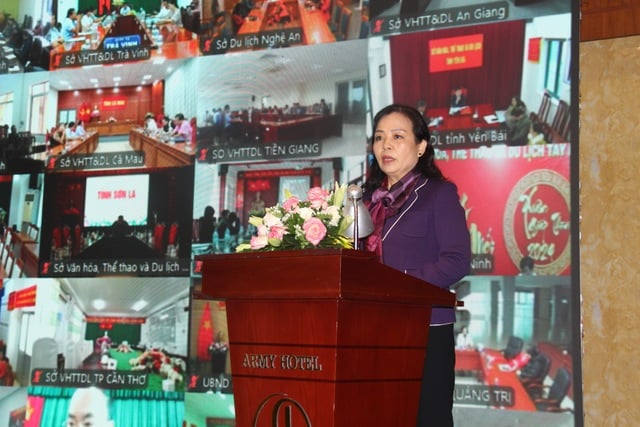
Dr. Ngo Phuong Lan speaks at the Workshop
According to Dr. Ngo Phuong Lan, when talking about cultural industry in Korea, people only use one word Hallyu (Korean wave also known as Korean stream). As for Japan, there is anime, manga, American cinema, Hollywood, and American theater, Broadway. To achieve this symbol, countries have had decades to form and build, and we also need to find a symbol for cultural industry.
Regarding the focus factor, according to Dr. Ngo Phuong Lan, we have not chosen the key points to implement. For example, human resources, if we invest in human resources, it must be top-notch human resources, not spread out investment. "In Korea, people have star technology, so they invest in learning from a young age. Building idols is based on cultural identity and cultural qualities" - Dr. Ngo Phuong Lan shared.
The third factor is the mechanism. According to Dr. Ngo Phuong Lan, it is necessary to clearly establish a public-private partnership mechanism. Dr. Ngo Phuong Lan believes that without public-private partnership, it is impossible to develop the cultural industry.
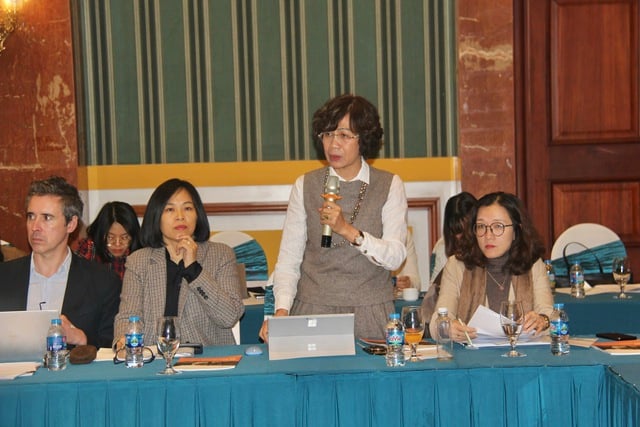
Associate Professor, Dr. Nguyen Thi Thu Phuong believes that it is necessary to shape a data center to develop IT.
Commenting at the workshop, Associate Professor Dr. Nguyen Thi Thu Phuong, Director of the Vietnam National Institute of Culture and Arts, said that the Draft Strategy needs to select areas for developing cultural industries that are close to the practical implementation in localities. At the same time, it is necessary to shape a data center so that the development of cultural industries can have a more stable step.
With Hanoi and Ho Chi Minh City as the leading cities in implementing the cultural industry, the two cities are the driving force for localities across the country to find a development model. Dr. Nguyen Thi Thu Phuong said that Hanoi needs to report the contribution of the capital's cultural industry sectors to the GDP percentage, to boost the national figure.
Besides, Dr. Nguyen Thi Thu Phuong affirmed that the fundamental key step in building the Strategy is to have the coordination of relevant ministries and branches...
Sharing the same view on the coordination between ministries and sectors in implementing the Strategy, Dr. Tom Flemming - British Council said that now is the time for Vietnam to grasp the opportunity to make a change in developing the cultural industry.
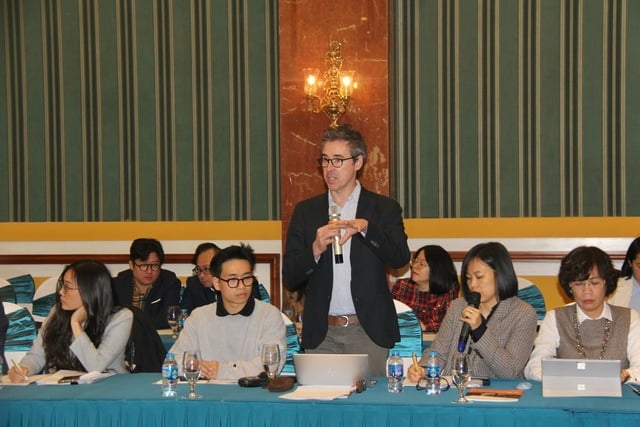
Dr. Tom Flemming affirmed that now is the opportunity that Vietnam needs to seize to have a transformation in the development of cultural industry.
According to Dr. Tom Flemming, the coordination mechanism between departments, branches, sectors, and organizations at all levels, between the public and private sectors, is not really synchronized. The participation of grassroots organizations, especially those affected by the policy system, is still formal.
"Legal regulations related to resource mobilization show that culture is not yet a priority area as cultural development still faces significant barriers and bottlenecks from both social awareness and legal regulations that do not keep up with changing circumstances," said Dr. Tom Flemming.
Dr. Tom Flemming also affirmed the importance of data and the basis of collected data will help evaluate the development of the IT industry over time and help build and evaluate the development quality of these industries.
In addition, it is necessary to position and promote Vietnam and Vietnamese cultural industries in the world market more strongly. Create a legal framework and mechanisms to encourage and attract more private investment as well as ensure the participation of the financial sector. This can be done through investment funds.
In addition, according to Dr. Tom Flemming, it is necessary to promote FDI attraction and foreign investment capital into the Vietnamese market so that foreign invested enterprises can cooperate with domestic enterprises to develop in the Vietnamese market.
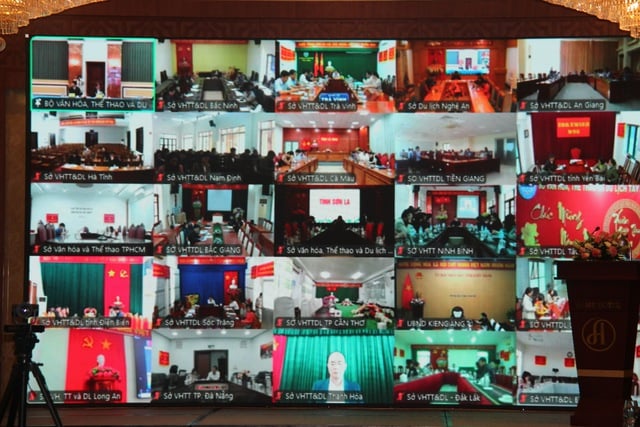
The conference is connected to many Departments of Culture, Sports and Tourism of localities across the country.
In his concluding remarks at the Workshop, Deputy Minister Ho An Phong affirmed that the opinions at the Workshop were based on the practical operations of many businesses and those directly involved in cultural industry. Many good ideas came from practice, originating from practice to build a Strategy, unlock resources, and promote the remarkable development of cultural industry in the coming time.
Appreciating the comments at the Workshop, the Deputy Minister said that many of the comments were good, suggesting many issues for the Drafting Committee of the Strategy, especially the difficulties and problems of those directly implementing the CNVH. The Deputy Minister said that policy making is based on such voices, we must listen more to remove difficulties.
The second issue is choosing the key areas in the cultural industry. Policy making must be selective, not comprehensive, to create breakthroughs. Delegates agreed to choose 5 basic key areas to promote cultural industry in the next phase, but there is no single sector. We identified a number of central sectors to promote, but the sectors are intertwined, linked and very supportive. We must update, clearly demonstrate in the Strategy, and clearly demonstrate the vision in policy making. "There is a strategy, a policy, persistently step by step creating mechanisms to remove institutional bottlenecks in the development of cultural industry" - the Deputy Minister requested.
The Deputy Minister also said that there needs to be further research and advice from experts, localities, and people working in the field of culture and arts to create the best environment for cultural and arts activities.
After today's workshop, based on the comments of the delegates, the Deputy Minister assigned the Copyright Office to complete the draft and send it to relevant ministries, branches, localities, agencies, organizations, associations, businesses, and experts for comments before submitting it to the Ministry's leaders for consideration and decision to report to the Prime Minister./.
Source: https://toquoc.vn/xay-dung-chinh-sach-de-cong-nghiep-van-hoa-dong-gop-hieu-qua-trong-ky-nguyen-vuon-minh-20241220155617554.htm





![[Photo] Sparkling lanterns to celebrate Vesak 2025](https://vphoto.vietnam.vn/thumb/1200x675/vietnam/resource/IMAGE/2025/5/7/a6c8ff3bef964a2f90c6fab80ae197c3)

![[Photo] General Secretary attends the parade to celebrate the 80th anniversary of the victory over fascism in Kazakhstan](https://vphoto.vietnam.vn/thumb/1200x675/vietnam/resource/IMAGE/2025/5/7/dff91c3c47f74a2da459e316831988ad)







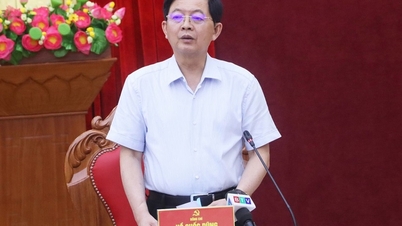














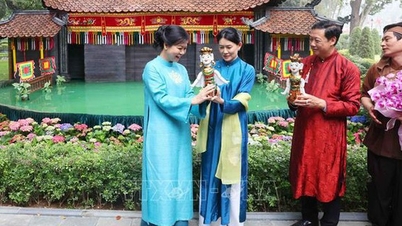
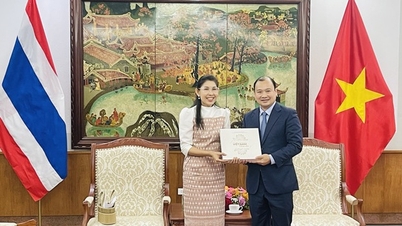
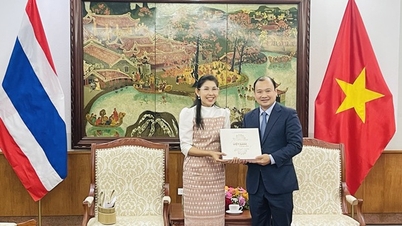



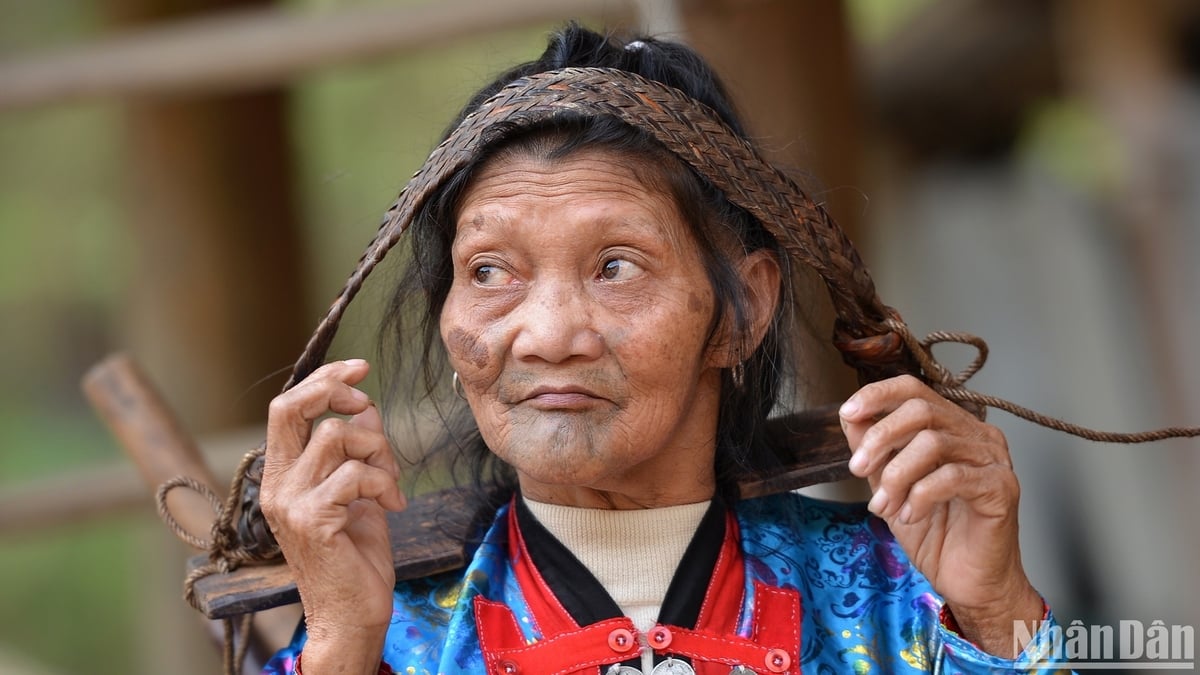















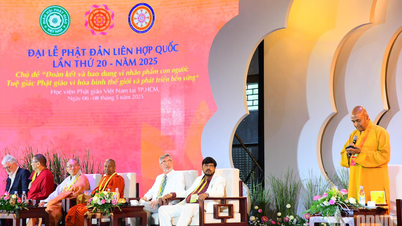


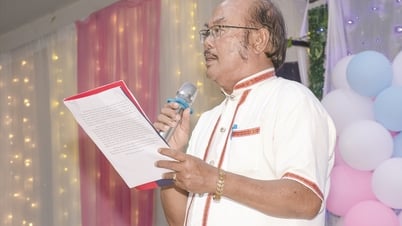
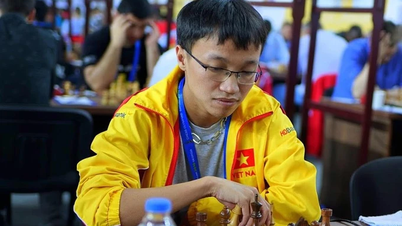





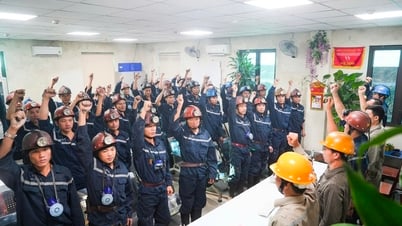


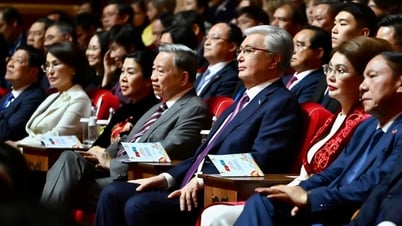


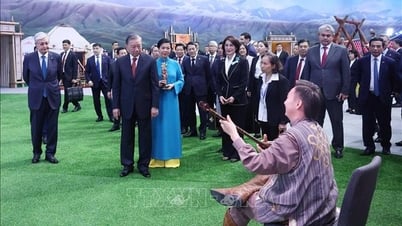
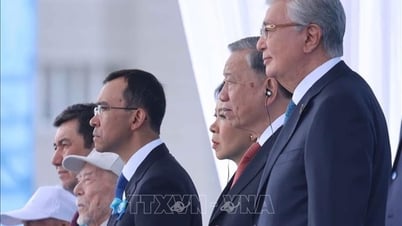

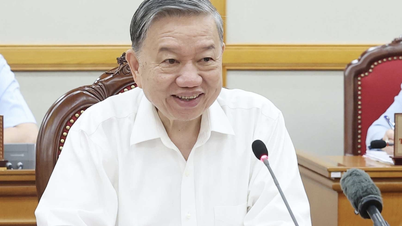


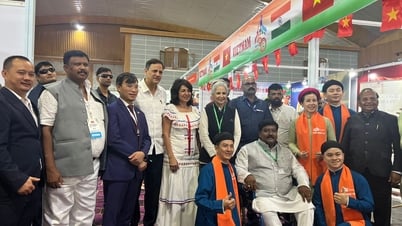

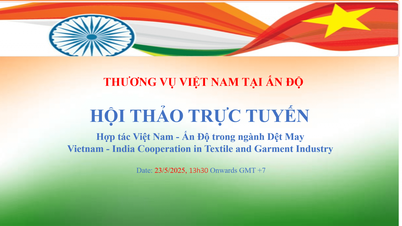


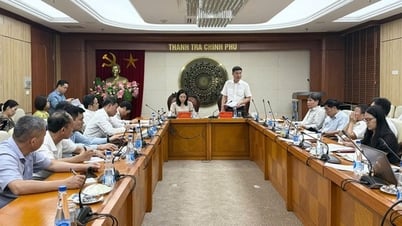
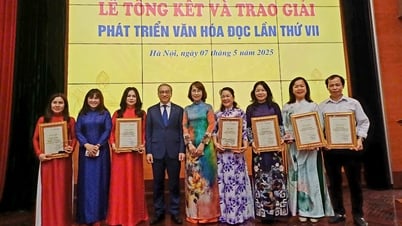

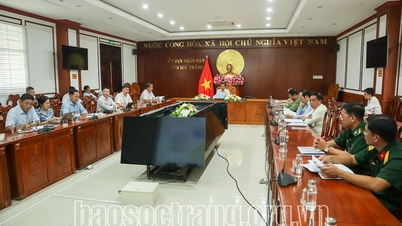





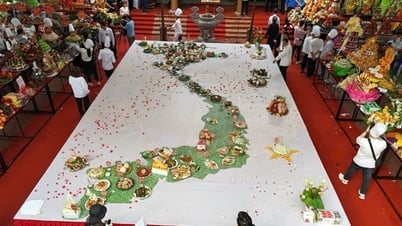







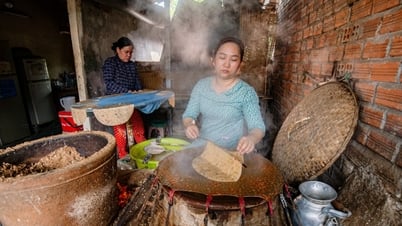





Comment (0)